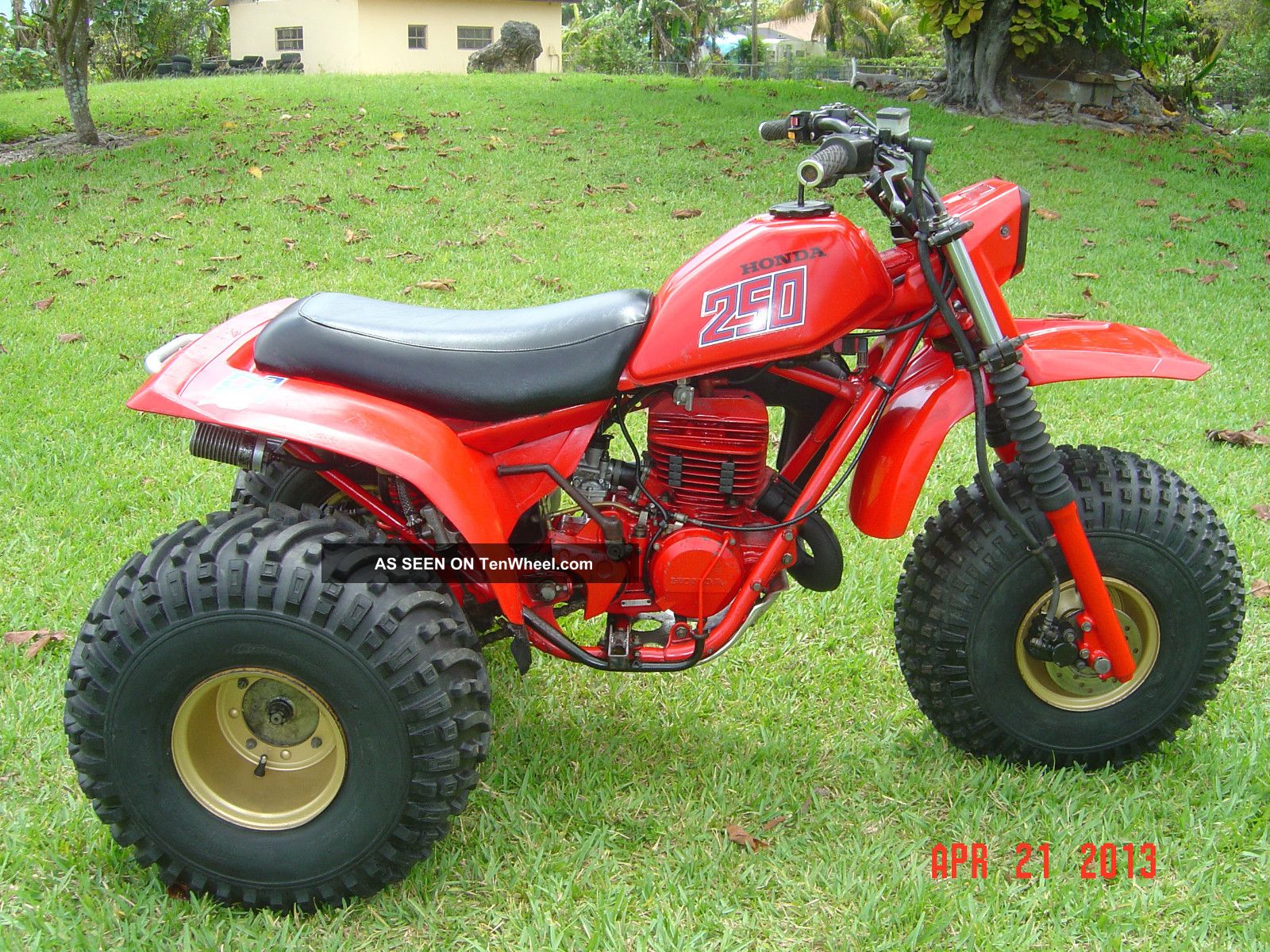

I got it working really well afterwards, a lot of power, but I heard a clicking sound after about 2 months and I thought maybe it was something I did in the carbs. The first time I cleaned out my carbs I didn’t know I would get them out of tune. I did not change the pilot jet.Īny advice on getting this carb tuned in would be appreciated !Īgain, nice work on the videos, real clear information for people to understand. It does run pretty good across the spectrum of adjustment, but better towards the closed side of adjustment. It’s a little over poppy on the decel…( I expect some ) and the fuel mixture screw can be all the way seated and it doesn’t slow down idle. With all the changes, the bike transformed in attitude…great throttle response, and it just sounds mean!… Only thing is, I’d like to get it dialed in nice.
1982 HONDA ATC 250R CARBURETOR SIZE FREE
Original tube spark arrestor swapped with free flow Spark arrestor I’ll give some info first.Ģ012 klr650 w/CV40 carb,just made changes from stock:

I am currently tuning my carb and would greatly appreciate some guidance.
1982 HONDA ATC 250R CARBURETOR SIZE HOW TO
Great site ! I watched the how to about adjusting fuel/air mixture screws.

Warmer days and colder nights affects air pressure in the empty space above fuel in tank which expands and contracts drawing in cooler moister air in the evening and overnight through overflow/breather = rust. People park their motorcycles outside, especially in the winter, with untreated bare metal interior, part-empty fuel tank causing the inside surface of the tank to rust. Tiny particles can get through the fuel filters above the petcock (which also needs to be cleaned) or other inline filters (replace). The most common reason for this condition is rust in the gas tank. It only shows up on the highway because the increased fuel consumption at highway speeds outpaces the fuel flow slowly dripping into the float bowl(s) through dirty filters and empties the bowls before they can refill. If you can park the bike on the shoulder for 10 minutes after it dies (giving fuel time to refill float bowls) and then start up and run fine again (for awhile)… dimes to donuts, that’s your problem. Remove the needle/seat assembly and use a small screwdriver or pick to remove the tiny little filters and clean them. 050 over and has a larger piston, which has been done in the last couple of years.All things being equal and no other apparent or obvious issues/problems, the most common reason a motorcycle inexplicably “dies” on the highway (and nowhere else) is fuel starvation due to empty float bowls caused by clogged filter screens above float bowl needle/seat intake valve assemblies. It is completetly stock other than it has been bored. I cleaned the contacts on the distributor and checked the air filter, both are clean. The tank of gas that is in it was mixed by the previous owner, who owns several of these bikes, so I'm pretty sure the mixture ratio is correct. I took off the carb bowl and it was absolutely spotless and I changed the spark plug in case it was fouled. The problem is when you get on it about halfway through the rpm range, right where the powerband usually kicks in on a 2-stroke, it starts cutting out like it has a governor or a rev-limiter. I starts first or second kick every time and runs perfect at low rpms. I recently acquired a 1984 Honda ATC 250R three wheeler.


 0 kommentar(er)
0 kommentar(er)
